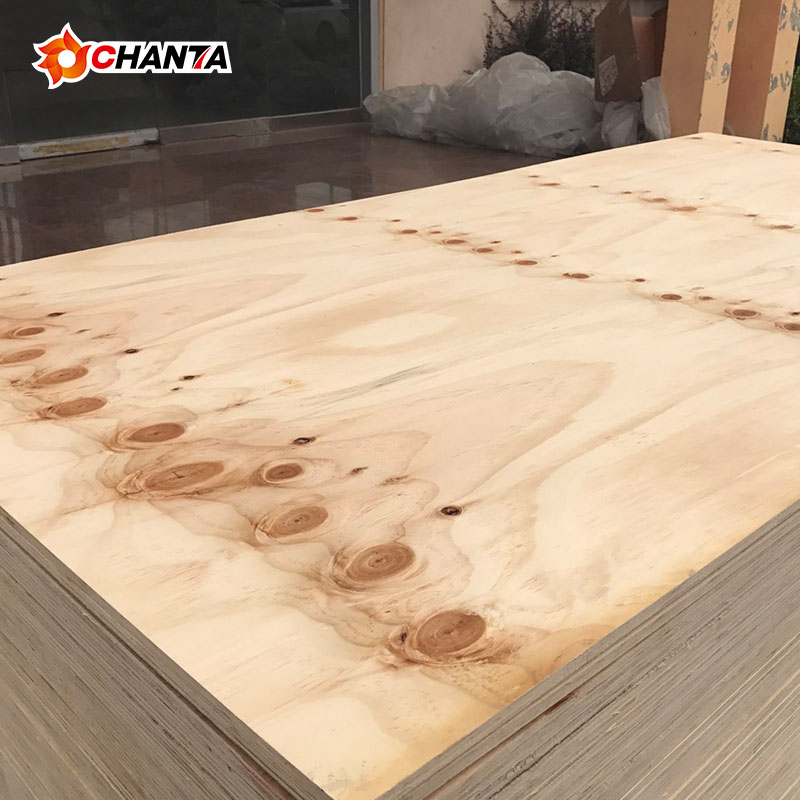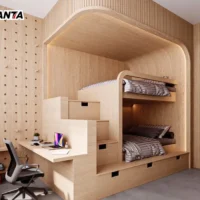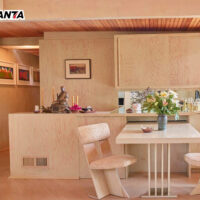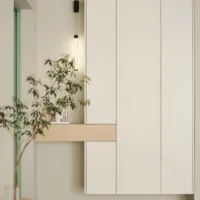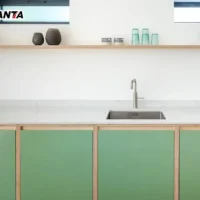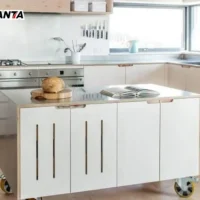Film faced plywood serves as a crucial support structure in construction, particularly for load-bearing demolding. This type of plywood is essentially a reinforced version of standard wooden plywood, offering the affordability of regular plywood but with added compression strength. As its name suggests, film faced plywood features a layer of film paper on its surface, which enhances its pressure resistance, waterproofing, and moisture-proofing. This layer also allows it to contact concrete directly, eliminating the need for a release agent and reducing pollution risks.
Types of Commonly Used
Film faced plywood is a vital material in many construction projects and represents a significant portion of total project costs. Choosing the right type can reduce expenses and accelerate construction. Among the various types, wooden plywood is one of the most frequently used. Here are the main types:
Red Face Plywood
Red face plywood, one of the earliest film faced plywood types, features a surface made from red melamine waterproof glue. Its core is usually crafted from woods such as poplar, pine, or eucalyptus. Due to its lightweight and ease of use, it’s popular for basement work, factory setups, and ground-floor construction projects.
Phenolic Plywood
Phenolic plywood is an upgraded version of red face plywood. Its core materials are dried meticulously, and it’s produced through a lengthy, precise process involving secondary hot pressing. This plywood uses advanced phenolic glue, giving it a smooth, mirror-like finish that simplifies demolding. While pricier than melamine-based plywood, phenolic mirror plywood offers superior waterproofing and enhanced durability, making it suitable for high-performance applications.
Laminated Plywood
Laminated plywood represents the highest quality among film faced plywood types. Made from a high-grade core covered in a laminated paper layer, it undergoes heating and pressing to ensure durability. This plywood’s surface, covered with black or red laminated paper, boasts waterproof, fireproof, and bright properties. Laminated plywood provides excellent resistance to weather, corrosion, and chemicals. It also enhances work efficiency by eliminating the need for secondary surface treatments and reduces labor and materials costs.
Chanta Film Faced Plywood: Quality and Customization
Chanta Film Faced Plywood uses a complete-core structure, which gives it high strength, minimal cracking, and multiple reuse capabilities. Available in large and small format options, it can also be customized to meet specific project requirements.
Advantages of Chanta Film Faced Plywood Over Ordinary Plywood
Chanta Film Faced Plywood offers multiple benefits compared to traditional plywood:
- Large Format: With a standard size of 2440x1220mm, it reduces the number of joints and improves support efficiency. This plywood resists warping, cracking, and deformation, offers high water resistance, and can be reused numerous times. Demolding is also simpler, requiring less time than steel molds.
- Lightweight: This plywood is lightweight, making it easy to handle in high-rise or bridge construction.
- High Reusability: With proper storage and care, film faced plywood can withstand 5 to 30 uses, or even more in some cases.
- Water Resistance: Using phenolic resin hot-pressed bonding, this plywood provides excellent water resistance. It holds up under water exposure and maintains its integrity during concrete curing.
- Thermal Insulation: This plywood provides good thermal insulation, which benefits winter construction. Additionally, it can be used for curved surfaces, offering more flexibility.
- Easy Processing: Film faced plywood offers superior nailing, sawing, and drilling capabilities compared to bamboo or small steel plates. It can be cut and shaped to meet various construction needs.
Chanta Film Faced Plywood features a special cladding paper, precision-machined to be super flat and smooth, enhancing both its durability and appearance. This innovative design makes Chanta plywood a preferred choice for contractors seeking quality and efficiency.














